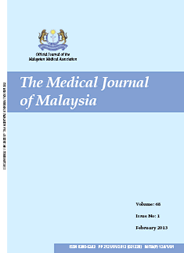MJM, Vol 70 Supplement 1 September 2015
Electromagnetic radiation from TELCO towers: Is it
an emerging health risk?
*National Defence University Malaysia, **Klinik Public, Penang
ABSTRACT
Introduction: Does electromagnetic field radiation (EMR) from telecommunication (TELCO) towers pose a health threat to people living within its vicinity? This question has emerged among residents exposed to EMR from TELCO towers erected in housing areas, school compounds, rooftops of multi-storey buildings and mosques. On 31st May 2011, the International Agency for Research on Cancer designated cell phones as "possible human carcinogen” [Class 2B] which was revised to Class 1 on October 16 2013.
Methodology: This paper summarises published and unpublished studies regarding EMR effects on non-specific health symptoms (NSHS) that was conducted using multistage sampling at Petaling Jaya, Taiping, Penang and Johor Bahru since 2008 by the authors, beginning as epidemiological studies using questionnaires progressing to complex blood studies.
Results: NSHS increased disproportionately to the distance for headaches, difficulty concentrating, feeling discomfort, depressive tendency, sleeping disorder, loss of appetite and nausea. The odds ratio (OR) for the development of the NSHS scored > 1 for all the 14 symptoms for residents exposed to EMR: reduced reaction time (OR 16.57), diarrhoea (OR 7.95), mental slowness (OR 5.46), vomiting (OR 5.35 corrected), mood swing (OR 3.3), insomnia (OR 3.22), giddiness (OR 3.07), loss of memory (OR 2.92), depression (OR 2.61), headache (OR 2.58), palpitation (OR 2.4), feverish (OR 2.37), fatigue (OR 2.31) and somnolence (OR 1.17). Odds ratio for exposed to non-exposed for levels of erythrocyte sedimentation rate (ESR) above 20mm/hr is 3.094.
Conclusion: The intention of this paper is to create awareness on the possible health effects of EMR and to suggest a change in policy that would convince operators to reduce transmitted power from 20W/carrier to max. 1 -2 W in dense urban area or to observe a minimal distance of people from cellular phone base stations that is 300 m.
